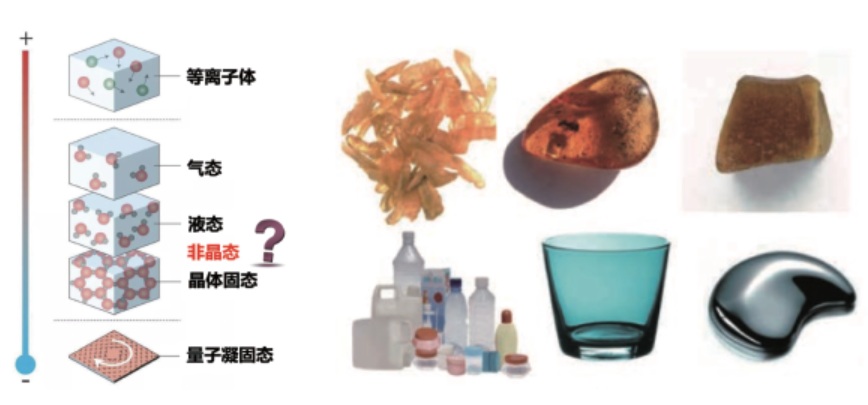非晶态物质在自然界和生活中普遍存在,具有独特的物理和化学特性。近年来,科学家们通过实验和理论研究,逐渐将非晶态物质归类为独立的常规物态,即非晶态是常规物质第四态,是物质的常规态之一。近一个世纪前提出的“是否所有物质都能形成非晶态”一直是科学界悬而未决的议题,其中最关键的问题在于能否将非晶形成能力最弱的单质金属转化为稳定的非晶态,这将为非晶态是物质的基本属性,是常规物质第四态提供最有力的证据。近期,我们发明了一种超快激光烧蚀的策略,实现了包括最难非晶化的金、银在内的多种单质金属的非晶化,突破了物质的非晶形成能力极限,证实了非晶态是物质的基本属性之一。这一策略不仅解决了单质非晶金属制备的百年难题,还为非晶材料的研究和应用提供了新的方向
Amorphous matters are ubiquitous in nature and daily life, exhibiting unique physical and chemical properties. In recent years, through extensive experimental and theoretical research, scientists have recognized the amorphous state as an independent and conventional state of matter, positioning it alongside solid, liquid, and gas as the fourth fundamental state. The long-standing question of whether all substances can form amorphous states, raised nearly a century ago, has remained unresolved until recently. The crux of this issue lies in determining if monatomic metals with the weakest glass-forming ability can be transformed into stable amorphous state, which would provide compelling evidence that the amorphous state is a fundamental property of matter. Recently, a method of ultrafast laser ablation was developed, successfully achieving the vitrification of various monatomic metals, including gold and silver, which are notoriously difficult to be vitrified. This result not only breaks the vitrification limitation of monatomic metals but also confirms that the vitrification is indeed an intrinsic property of matter. Moreover, this method provides a strategy for the preparation and design of amorphous materials.




